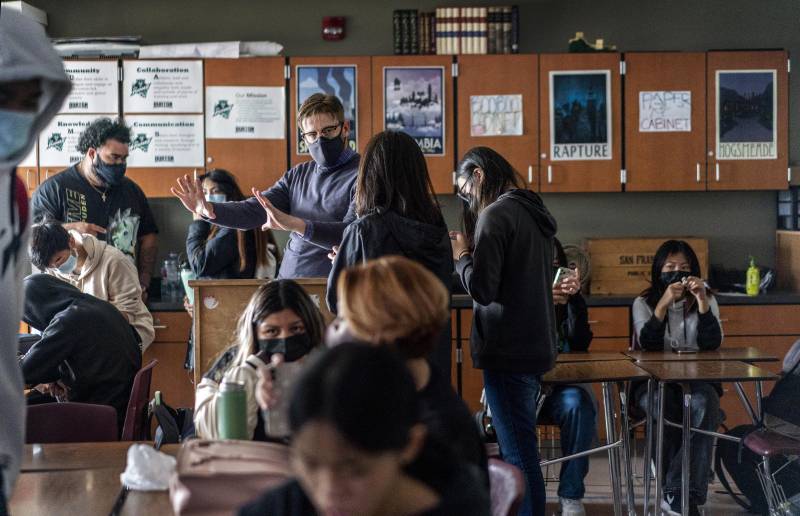Other factors impacting teacher retention include heavy workload, low pay and escalating living costs, with some 80% of survey respondents saying it was difficult to find affordable housing close to where they teach. Many also cited a lack of support from district administrators. And a significant portion of teachers of color and LGBTQ+ educators surveyed said they had experienced discrimination.
Howard recently discussed the survey with KQED morning host Brian Watt. Here’s an excerpt of their conversation, which has been edited for brevity and clarity.
BRIAN WATT: Tell us more about the findings and how they relate to keeping teachers in the classroom.
TYRONE HOWARD: So these data were deeply troubling on a lot of levels because we know the pandemic has really been difficult for a lot of folks — educators included. But these data really lifted up how teachers are exhausted, stressed, frustrated (and) overwhelmed. In many ways, I think these educators are telling us that they’re beyond burnout.
I remember feeling like teachers were stressed, exhausted and overwhelmed before the pandemic. Do you think that the pandemic just made these trends worse or more evident?
It’s not an “either/or.” I think it’s a “both.” Our data show about 77% of our respondents saying that things have changed for the worse, compared to where they were prior to the pandemic. And I think during the pandemic, the general public got a bit of a sense of what it meant to educate young people, because lots of parents and caregivers were doing that at home. So I think there’s been a larger awareness that the general public cares about the difficulties of teaching.
One of the other things that struck me in this survey is the experience of teachers of color, in particular. Just over 60% of Black teachers and half of Asian American and Pacific Islander teachers reported having experienced racial discrimination in their current position. What does this tell you about school support?
What it tells me is that we have a lot of work to do. Because, on the one hand, we talk about creating inclusive and supportive spaces for our students, but yet we’ve not done that as adults when it comes to our staff. My concern becomes, if the adults don’t feel safe, what does that say for the students who are from those same ethnic and racial backgrounds? So there’s a lot of work that needs to be done with regard to how we create truly inclusive, safe and affirming spaces for all educators, regardless of their ethnic or racial backgrounds.
What might an episode of racial discrimination for a teacher of color look like?
It can manifest in so many different ways — implicit and explicit.
From an explicit standpoint, what happens in schools is that frequently teachers of color are the primary advocates for students of color. And so when there’s an issue of what some might perceive as unfair treatment, when there’s an issue of what some might consider to be overlooking or under-serving certain students of color, it’s typically the teacher of color who says, ‘Wait a minute, that’s not fair. That’s not what we should be doing as educators.’
When they raise those issues, oftentimes they are quick to be shut down and told that those things aren’t real, or they’re quick to be told that you only are concerned about the Black students or the Asian students, or they’re told that you need to mind your business. So they’re told to stay in their place and keep quiet.

